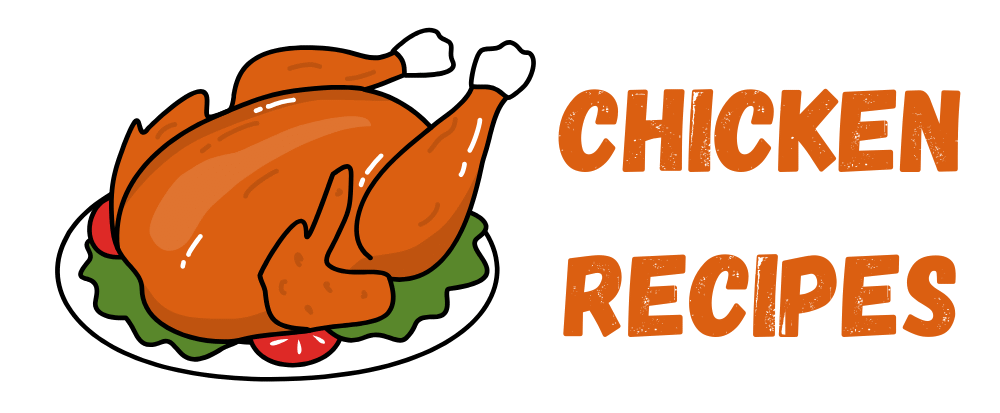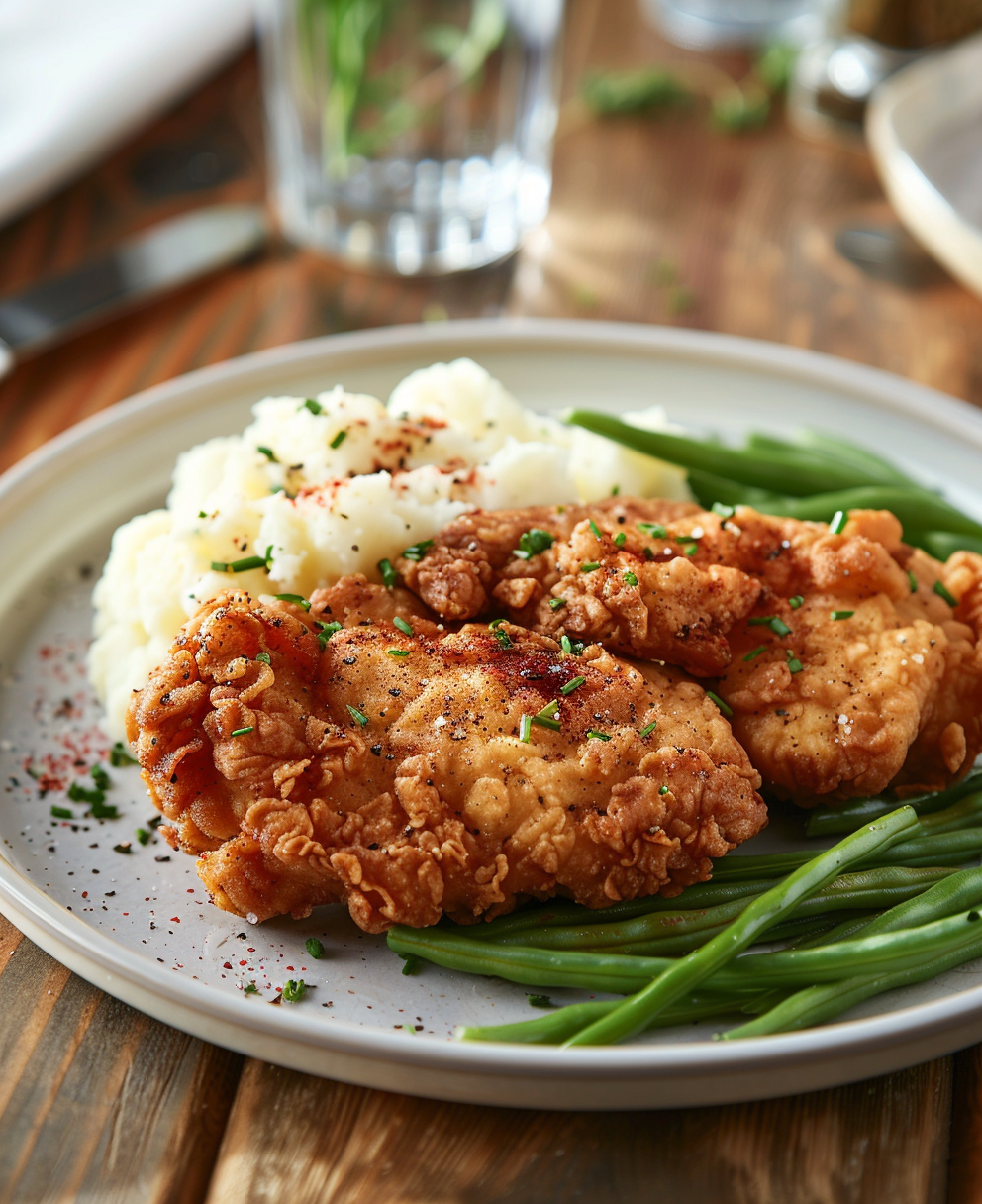
Why I Love Making Fried Chicken at Home
I still remember the first time I made fried chicken at home. It was a lazy Sunday afternoon, and my kitchen smelled like crispy, golden perfection. The sound of the chicken sizzling in the pan felt almost magical. That day, I realized fried chicken isn’t just food—it’s comfort, joy, and a little bit of nostalgia all rolled into one.
But here’s the thing: many recipes call for buttermilk. At first, I didn’t think much of it. Then one day, I found myself staring at my fridge, realizing I didn’t have any buttermilk on hand. I panicked. Was my fried chicken dream over? Absolutely not. I decided to experiment, and that’s when I discovered a fried chicken recipe no buttermilk that works wonders. This article shares everything I learned so you can make delicious fried chicken anytime, even without buttermilk.
Why You Don’t Need Buttermilk for Fried Chicken
Let’s talk about why buttermilk is often used in fried chicken recipes. People love it because it tenderizes the meat and adds a tangy flavor. But do you really need buttermilk for fried chicken? After testing different methods, I can confidently say no. There are plenty of substitutes that deliver equally amazing results.
When I first tried making fried chicken without buttermilk, I wasn’t sure what to expect. Would the chicken be dry? Would it lack flavor? To my surprise, the alternatives worked beautifully. My family couldn’t tell the difference. If anything, they said the chicken was juicier and more flavorful than ever. Let me show you how to achieve the same success.
Common Substitutes for Buttermilk
So, what can you use if you don’t have buttermilk for fried chicken? Here are some simple options:
- Yogurt: Mix plain yogurt with a little milk to thin it out. It mimics buttermilk’s tanginess perfectly.
- Milk + Vinegar or Lemon Juice: Combine 1 cup of milk with 1 tablespoon of vinegar or lemon juice. Let it sit for 5–10 minutes until it curdles.
- Eggs: Whisked eggs can add moisture and help the coating stick. Many people ask, “Can I use egg instead of buttermilk for fried chicken?” Yes, you absolutely can.
- Water: Believe it or not, water works too. People often wonder, “Can I use water instead of buttermilk for fried chicken?” While it won’t add flavor, it keeps the chicken juicy and helps the breading adhere.
Each of these substitutes brings something unique to the table. Whether you’re looking for tanginess, moisture, or simplicity, there’s an option for you. In this article, we’ll explore these substitutes in detail, along with tips and techniques to make your fried chicken unforgettable.
What You’ll Learn in This Article
If you’ve ever wondered how to make fried chicken without buttermilk, you’re in the right place. By the end of this article, you’ll know:
- How to choose the best substitute for buttermilk based on your pantry staples.
- Step-by-step techniques to ensure your chicken turns out juicy and crispy every time.
- Answers to common questions like “What can I use if I don’t have buttermilk for fried chicken?” and “Do you need buttermilk for fried chicken?”
You’ll also discover how small tweaks can make a big difference in flavor and texture. Whether you’re a beginner or a seasoned cook, this guide has something for everyone.
The Secret to Flavorful Fried Chicken Without Buttermilk
One of the biggest misconceptions is that buttermilk is the only way to get tender, flavorful fried chicken. That’s simply not true. The key lies in understanding how to prep your chicken and balance flavors. For example, adding spices to your substitute mixture can enhance the taste. A pinch of garlic powder, paprika, or cayenne pepper goes a long way.
During my experiments, I noticed that marinating time matters more than the exact liquid you use. Even if you’re using a simple milk-and-vinegar mix, letting the chicken soak for at least 30 minutes makes a huge difference. If you have time, marinate it overnight for maximum flavor.
Another tip? Don’t skip the dredging step. Coating the chicken in flour or a seasoned mix creates a crispy layer that locks in moisture. This step works with any substitute, ensuring your chicken stays juicy inside and crunchy outside.
Choosing the Right Substitute for Your Needs
Which substitute should you choose? It depends on what you have available and your personal preferences. Here’s a quick breakdown:
- If you want tanginess, go for yogurt or the milk-and-vinegar combo.
- If you’re short on time, eggs are a great option. They coat the chicken quickly and evenly.
- If you’re out of dairy, water works as a neutral base. Pair it with spices to boost the flavor.
Remember, the goal is to keep the chicken moist while helping the breading stick. Any of these options will get you there. Later in this article, we’ll dive deeper into each substitute, including specific measurements and tips for success.
Answering Your Biggest Questions
You might still have some doubts. Can you really make great fried chicken without buttermilk? Yes, you can. Will it taste as good? Absolutely. I’ve served this fried chicken recipe no buttermilk to friends and family, and they always rave about it. No one misses the buttermilk.
We’ll also address common concerns, like whether certain substitutes work better for dark meat versus white meat. Spoiler alert: They all work! It’s more about technique than the specific ingredient.
By the time you finish reading, you’ll feel confident whipping up fried chicken anytime, anywhere. So let’s roll up our sleeves and get started!
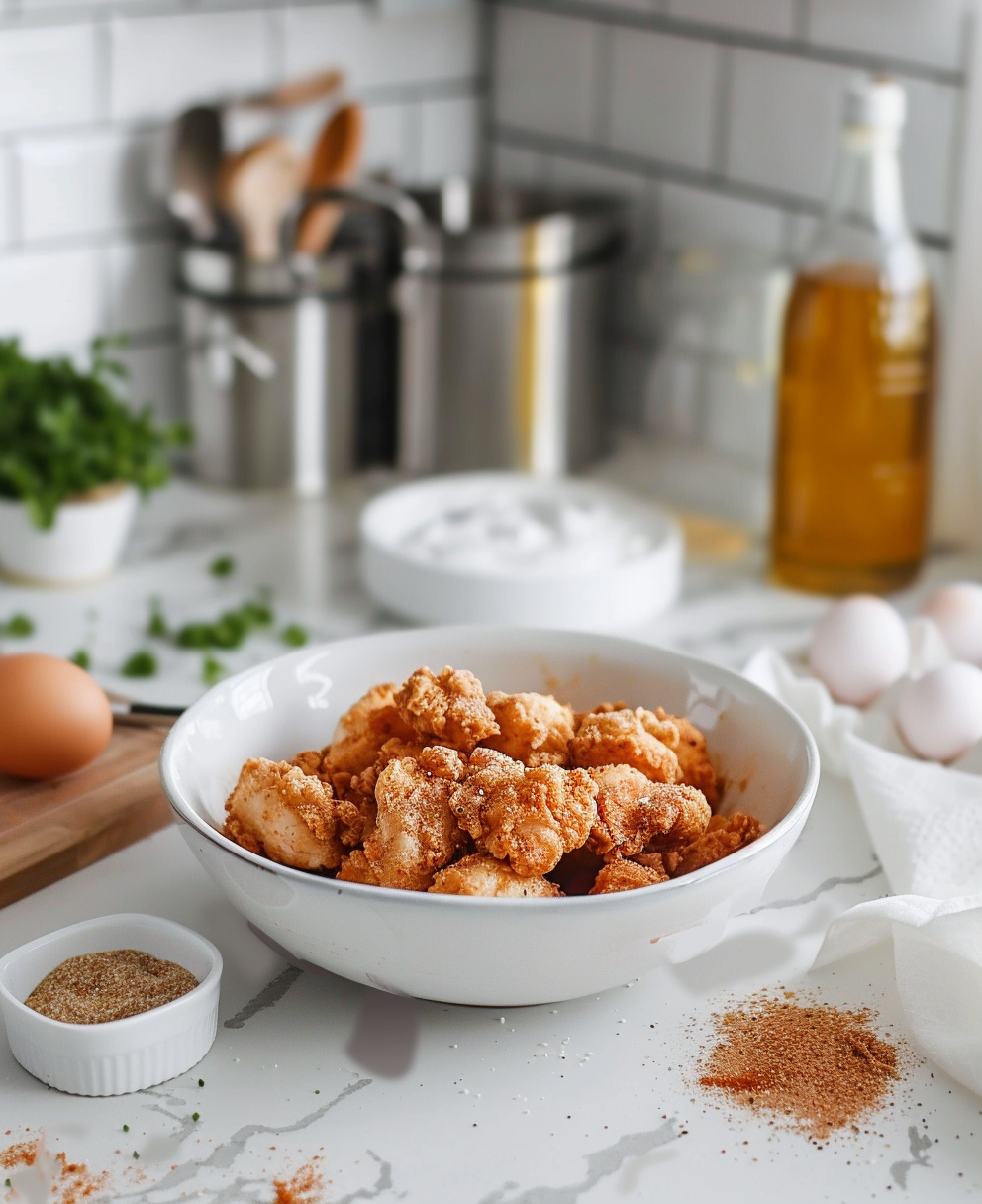
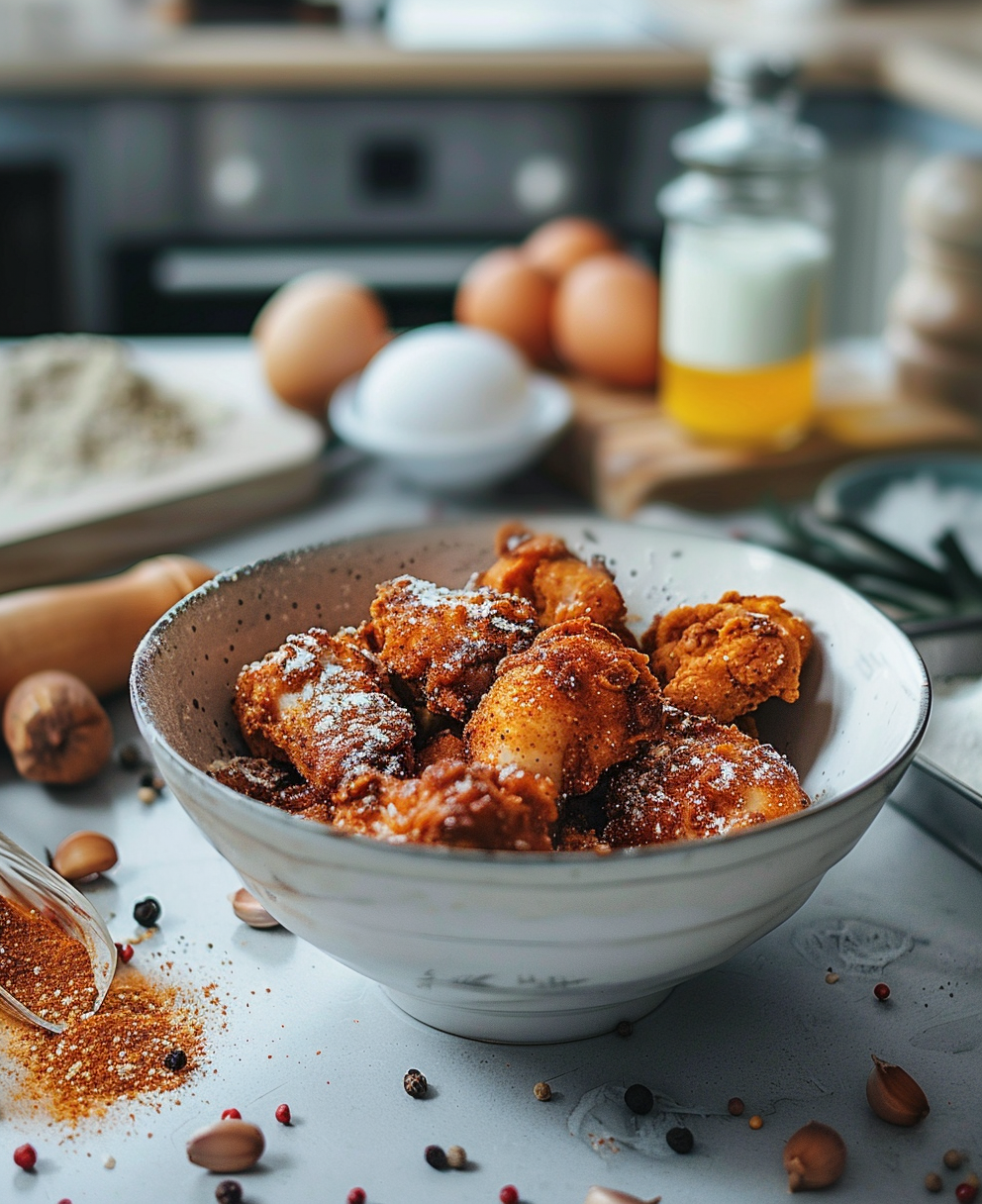
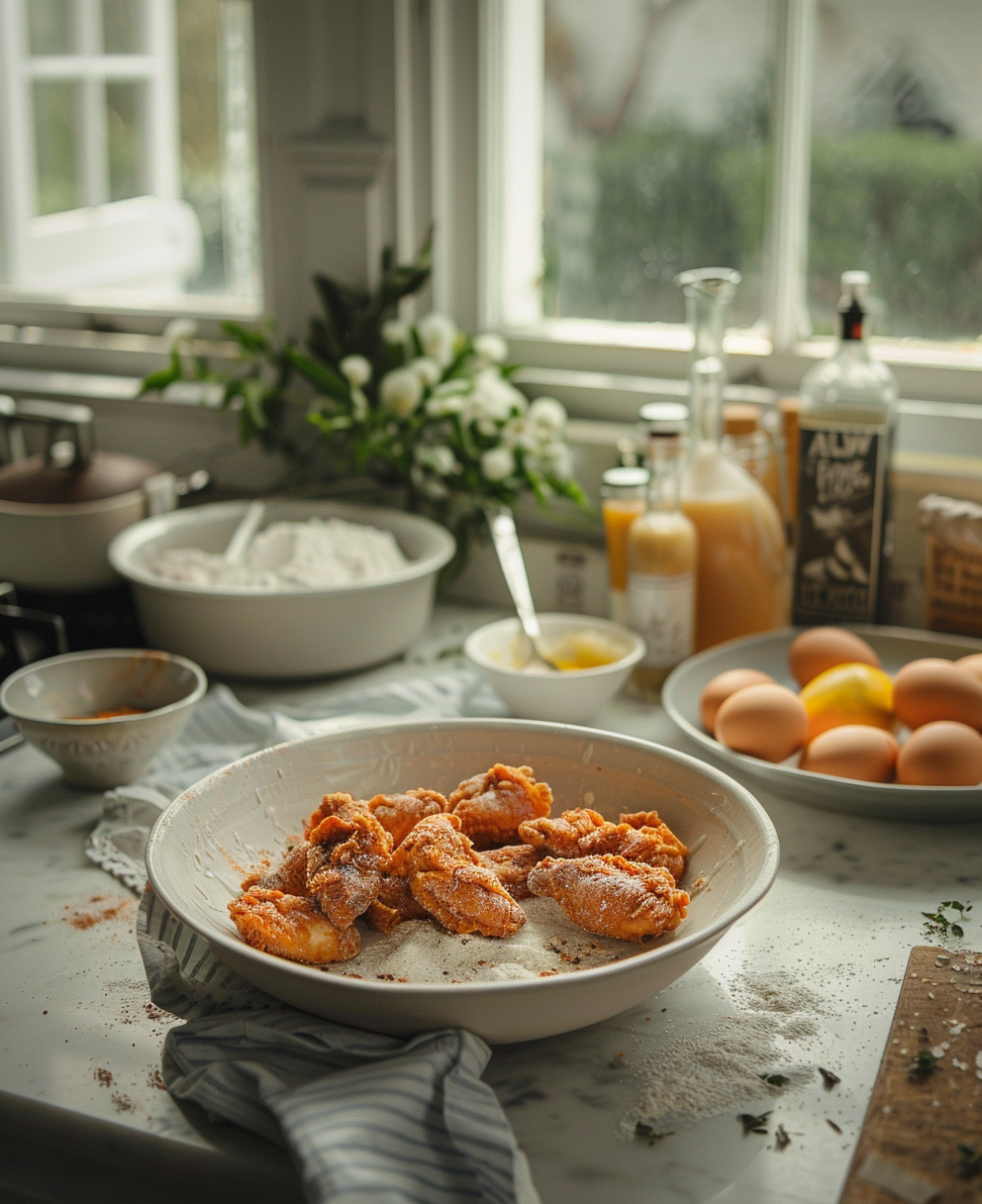
Best Alternatives to Buttermilk for Your Fried Chicken
Alright, let’s dive into the good stuff. You’re probably wondering how to recreate that buttermilk magic without actually using buttermilk. Lucky for you, I’ve been down this road before—more times than I can count. Whether it’s a last-minute craving or just an empty fridge, these substitutes have saved me from many a fried chicken crisis. Trust me, they’ll do the same for you.
Using Milk + Vinegar or Lemon Juice
Here’s the thing about milk and vinegar: it’s like a little kitchen alchemy. Combine them, and within minutes, you’ve got something that mimics buttermilk almost perfectly. It sounds too simple to work, but oh, it does. Here’s how to make it:
- Pour 1 cup of milk into a bowl. Whole milk works best, but any kind will do in a pinch.
- Add 1 tablespoon of white vinegar or lemon juice. Stir it gently, then let it sit for about 5–10 minutes. You’ll notice it starts to curdle—that’s exactly what you want.
- Once it thickens slightly and has that tangy smell, it’s ready to go.
Why does this work? Well, the acidity in the vinegar or lemon juice reacts with the proteins in the milk, creating a texture and flavor profile similar to buttermilk. It tenderizes the chicken while adding that subtle tang we all love. Plus, it’s super cheap and easy to whip up. Funny enough, I once forgot I had real buttermilk in the fridge because this hack worked so well!
A quick tip: If you’re doubling the recipe, don’t overdo the vinegar. A little goes a long way. Too much, and your chicken might end up tasting more like salad dressing than dinner.
Can I Use Egg Instead of Buttermilk?
Now, onto eggs. This is one of those questions I get asked a lot: Can I use egg instead of buttermilk for fried chicken? The short answer? Yes. The longer answer? It depends on what you’re looking for.
Eggs are fantastic at helping breading stick to the chicken. They create a smooth, sticky layer that ensures every piece gets evenly coated. If you’re aiming for maximum crunch, eggs are your friend. However, they don’t provide the same tenderizing effect as buttermilk. So while your chicken will be crispy, it might not be quite as juicy unless you pair the eggs with other techniques (like marinating).
By the way, if you’re thinking about trying this method, here’s my pro tip: whisk the eggs thoroughly. A smooth consistency makes a world of difference when coating the chicken. And don’t skip seasoning the egg mixture itself—a dash of salt, pepper, or even paprika adds an extra layer of flavor.
When does egg shine brightest? Honestly, it’s perfect for recipes where you want richness without dairy. For example, check out my Honey Buffalo Chicken Wings. That sticky glaze pairs beautifully with the crispiness eggs bring to the table.
Water as an Option: Does It Work?
Okay, now let’s talk about water. You might be skeptical, but hear me out. Can you use water instead of buttermilk for fried chicken? Absolutely. Will it blow your mind? Probably not. But sometimes, simplicity wins.
Water doesn’t add flavor or tenderize the meat, but it does keep things moist. Think of it as the bare minimum—it gets the job done. In fact, water is often used in classic Southern fried chicken recipes where the focus is purely on texture rather than complex flavors.
There are pros and cons to consider. On the plus side, water is always available, cheap, and neutral. No weird tang, no dairy issues—it’s straightforward. On the downside, you won’t get the depth of flavor that other substitutes offer. To compensate, lean heavily on spices and seasonings. A blend of garlic powder, onion powder, smoked paprika, and cayenne can save the day.
Funny story: One time, I was hosting a dinner party and completely forgot to prep anything ahead of time. All I had was water and some leftover cornstarch from another recipe. Desperate times call for desperate measures, right? Turns out, the chicken wasn’t half bad. Sure, it lacked the wow factor, but everyone still enjoyed it. Sometimes, you just need to roll with it.
Preparing Your Chicken for Maximum Flavor
Marinating is where the magic happens. Even with substitutes, giving your chicken time to soak up flavors makes a huge difference. Let’s break it down step by step.
Marinating Tips Using Your Chosen Substitute
No matter which substitute you choose, marinating is key. Aim for at least 30 minutes, though overnight is ideal. Why? Because patience pays off. The longer the chicken sits, the more flavorful it becomes.
If you’re using a liquid-based substitute like yogurt or milk-and-vinegar, pour it into a resealable bag with your chicken pieces. Seal it, toss it around a bit, and pop it in the fridge. Easy peasy. Eggs require a slightly different approach since they’re thicker. In that case, brush the egg mixture onto the chicken directly before dredging.
Speaking of dredging, let’s not forget the importance of seasoning your flour mix. I like to use a combo of salt, black pepper, garlic powder, onion powder, and smoked paprika. Oh, and a pinch of cayenne for heat. Want to take it up a notch? Try my Honey Gochujang Chicken Kebabs spice blend—it works wonders on fried chicken too.
Adding Spices and Seasonings to Boost Taste
Without buttermilk, spices become your secret weapon. Don’t skimp here—they’re what elevate your fried chicken from “meh” to “wow.” Personally, I’m obsessed with layering flavors. Start with a base of salt and pepper, then build from there.
For example, try mixing dried thyme, oregano, and a touch of cumin for a unique twist. Or go bold with curry powder and turmeric for an international flair. Experiment until you find your signature blend. Just remember, balance is crucial. Too much spice can overwhelm the dish.
Oh, and here’s a fun idea: serve your fried chicken alongside my Fried Chicken Liver Recipes. The creamy livers pair beautifully with crispy fried chicken. Talk about a match made in heaven!
My Favorite Spice Blend for Juicy, Flavorful Fried Chicken
Ready for the ultimate spice mix? Here’s what I use:
- 2 tablespoons salt
- 1 tablespoon black pepper
- 1 tablespoon garlic powder
- 1 tablespoon onion powder
- 1 teaspoon smoked paprika
- ½ teaspoon cayenne pepper (optional)
Mix it all together, then sprinkle generously over your chicken before frying. Trust me, this blend packs a punch. Pair it with a crispy coating inspired by my Crispy Chicken Stir-Fry Recipe, and you’ve got yourself a winner.
In conclusion, making fried chicken without buttermilk isn’t just possible—it’s delicious. With these tips and tricks, you’ll never miss the real deal again. Happy cooking!
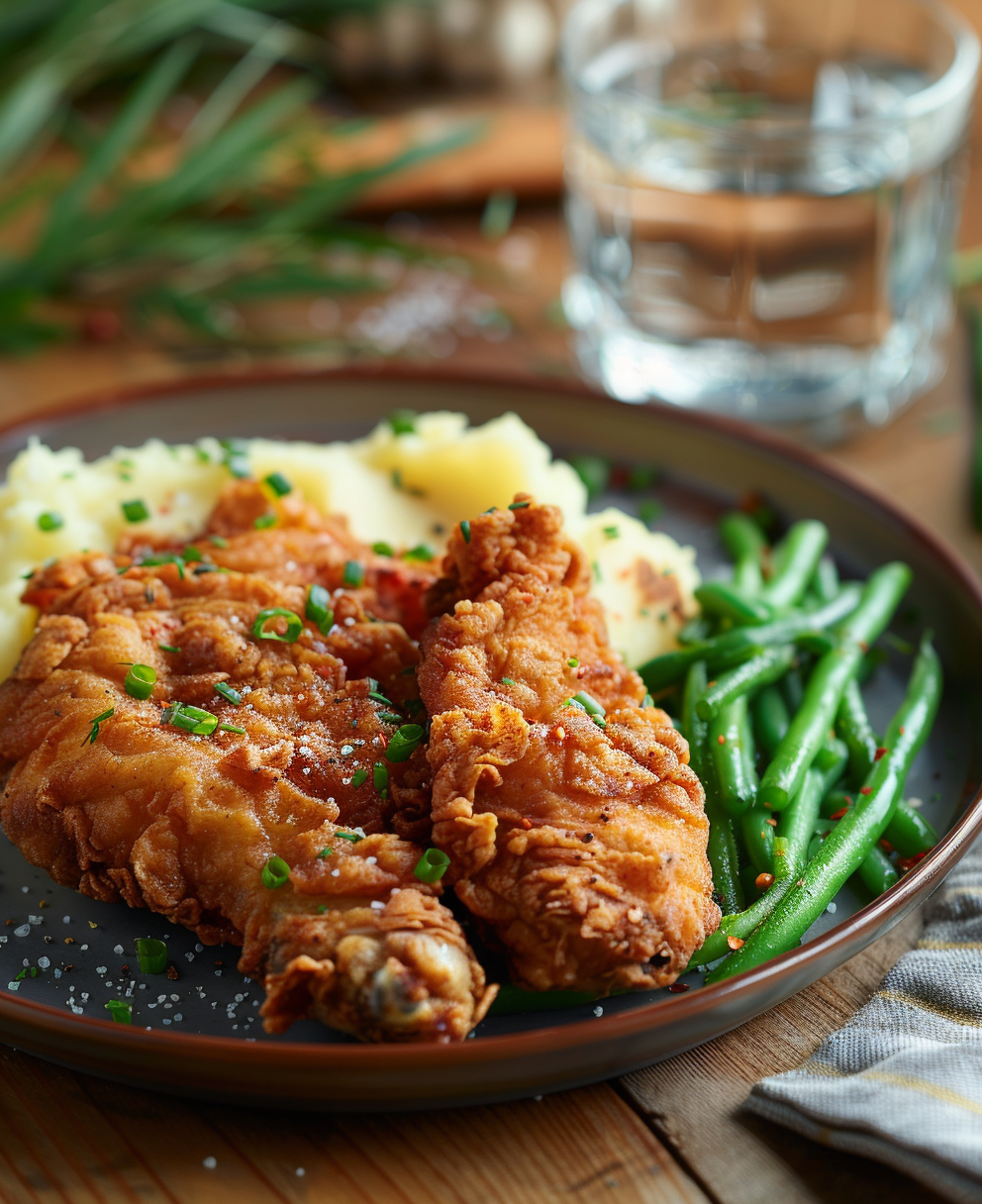
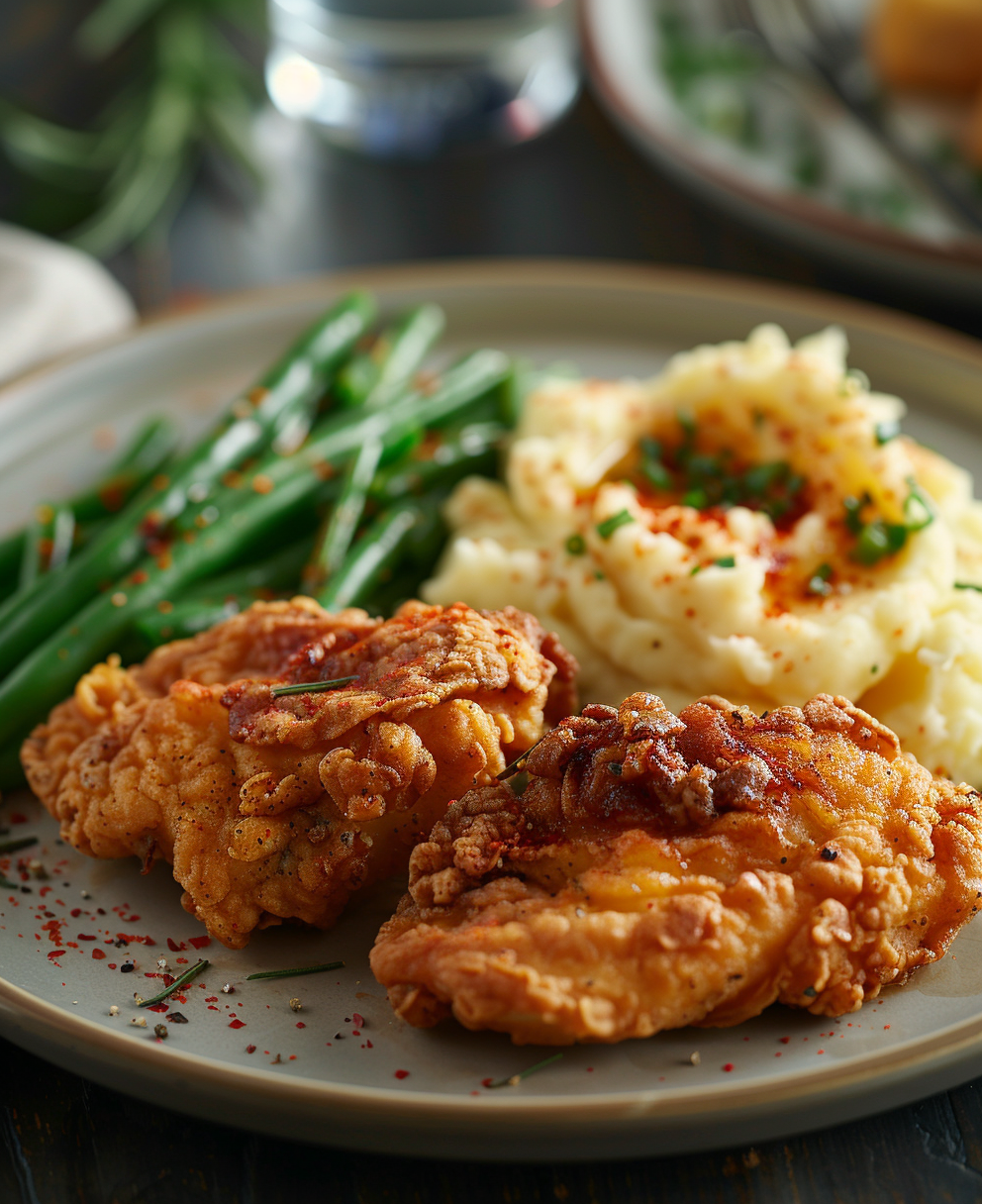
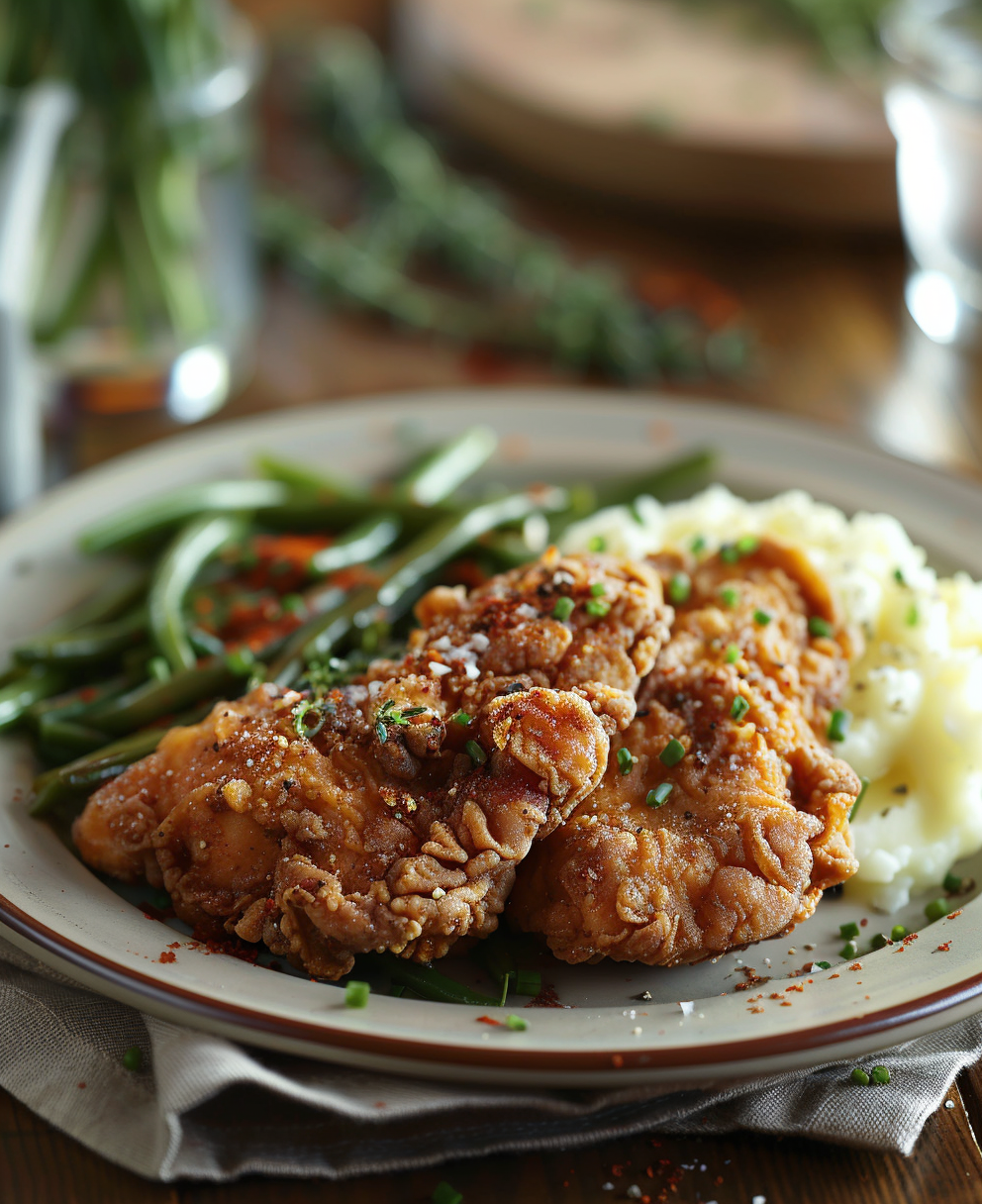
Cooking Techniques for Perfect Fried Chicken
Alright, let’s get into the nitty-gritty of making fried chicken that’s so good, you’ll forget all about buttermilk. The secret sauce (pun intended) lies in how you handle the breading and frying process. Trust me, these little tips make a world of difference.
Breading Basics for a Crispy Coating
First things first: the breading. You want that golden, crunchy crust, right? Here’s how to nail it every time. Start with your flour mixture. I like using a mix of all-purpose flour and cornstarch. Why? Cornstarch is magical—it adds an extra layer of crispiness that holds up even after the chicken cools down. For every cup of flour, toss in about 2 tablespoons of cornstarch. It’s subtle, but you’ll notice the difference.
Now, here’s a pro move: the double-dipping method. This is where you dunk your chicken in the wet mixture (whether it’s yogurt, eggs, or milk-and-vinegar), coat it in flour, then dip it back into the wet mixture before giving it one final flour bath. Sounds like overkill? Maybe. But the result is a thick, crunchy shell that clings to the chicken like glue. Without buttermilk, this technique becomes your best friend for ensuring the coating sticks.
By the way, don’t rush this step. Pat the chicken dry before dipping—excess moisture is the enemy of crispiness. And if you’re worried about the coating falling off during frying, chill the breaded chicken in the fridge for 15–20 minutes before cooking. Cold chicken holds onto its breading better, trust me.
Frying Like a Pro
Choosing the right oil is half the battle. I swear by peanut oil because it has a high smoke point and adds a faint nutty flavor that pairs beautifully with fried chicken. Canola or vegetable oil works too if you’re avoiding peanuts. Just avoid olive oil—it’s not meant for high-heat frying.
Temperature control is key. Aim for 350°F (175°C). Any hotter, and your chicken will burn on the outside while staying raw inside. Any cooler, and you’re looking at greasy, soggy chicken. Use a thermometer to keep tabs on the oil. If you don’t have one, here’s a trick: drop a tiny pinch of flour into the oil. If it sizzles immediately, you’re good to go.
Funny enough, I learned this next tip from my grandma: fry in batches. Overcrowding the pan lowers the oil temperature, which leads to uneven cooking. Plus, it gives you time to admire each piece as it fries to perfection. Once cooked, place the chicken on a wire rack instead of paper towels. This lets air circulate around it, keeping the bottom crispy instead of steamy.
One last thing: let the chicken rest for a few minutes after frying. It’s tempting to dig in right away, but patience pays off. Resting allows the juices to redistribute, making every bite juicy and flavorful.
Maintaining Crispiness After Cooking
We’ve all been there—fried chicken that starts out perfect but turns soggy within minutes. Here’s how to avoid that tragedy. First, skip the lid. Covering fried chicken traps steam, which softens the crust. Instead, keep it uncovered on the wire rack until serving time.
If you need to reheat leftovers (though they’re rare in my house), use the oven instead of the microwave. Preheat it to 375°F (190°C), place the chicken on a baking sheet, and warm it for 10–15 minutes. It’ll come out almost as crispy as when it was first fried. Oh, and here’s a fun idea: try pairing reheated chicken with my favorite chicken recipes. They’re perfect for turning leftovers into something new and exciting.
FAQ Section
Let’s clear up some lingering questions you might have. These are the FAQs I hear most often:
- What can I use if I don’t have buttermilk for fried chicken? No sweat! Try yogurt, milk mixed with vinegar or lemon juice, eggs, or even water. Each option brings something unique to the table, whether it’s tanginess, richness, or simplicity.
- Do you need buttermilk for fried chicken? Nope, not at all. While buttermilk is great for tenderizing and adding flavor, plenty of substitutes work just as well. Experiment to find what suits your taste buds.
- Can I use egg instead of buttermilk for fried chicken? Absolutely. Eggs are fantastic for helping the breading stick and creating a crispy texture. Just remember, they won’t tenderize the meat as much, so consider marinating longer if needed.
- Can I use water instead of buttermilk for fried chicken? Yes, water works, though it won’t add flavor. Make up for it by seasoning generously. Think of it as a blank canvas—you can still create something amazing.
- How long should I marinate chicken without buttermilk? At least 30 minutes, but overnight is ideal. The longer it marinates, the more flavorful it gets. Just don’t leave it out at room temperature for too long.
- What spices work best for fried chicken? Garlic powder, onion powder, smoked paprika, and cayenne pepper are my go-tos. Mix and match based on your preferences. A little creativity goes a long way.
- Should I chill the chicken before frying? Yes! Chilling breaded chicken helps the coating adhere better and prevents it from falling off during frying. Plus, it ensures even cooking.
- Why does my fried chicken turn out soggy? Sogginess usually happens due to trapped steam. Avoid covering the chicken after frying and use a wire rack instead of paper towels.
- Can I bake fried chicken instead of frying it? Sure, though it won’t be quite as crispy. To mimic frying, brush the chicken with oil before baking and crank up the oven temperature.
- How do I know when the chicken is fully cooked? Use a meat thermometer to check the internal temperature. It should read 165°F (74°C). If you don’t have one, cut into the thickest part—the juices should run clear.
Final Thoughts
You know what makes cooking so rewarding? The freedom to adapt and innovate. With this easy fried chicken recipe no buttermilk required, you now have the tools to create something truly special. Whether you’re feeding a crowd or satisfying a craving, you’re ready to shine.
So go ahead, experiment with different substitutes and seasonings. Find what works best for you and make it your own. Who knows? You might just stumble upon your signature dish. Happy frying!

